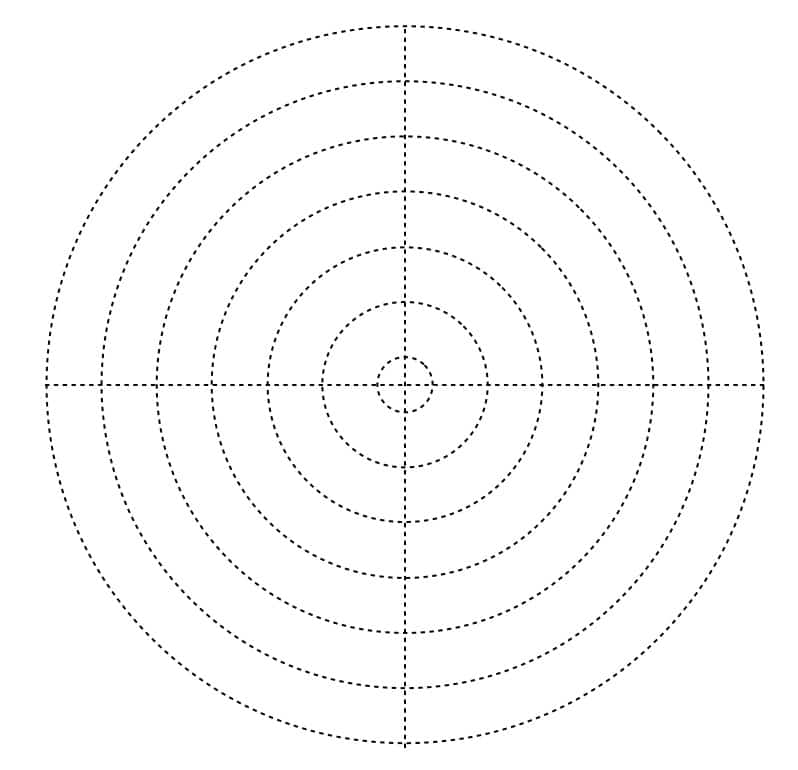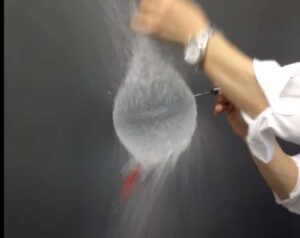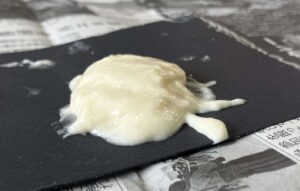A Tiny Universe in a Petri Dish: Discover the Magic of Diffusion with Coffee Sugar in Just 10 Minutes!
I’m Ken Kuwako, your Science Trainer. Every Day is an Experiment!
Have you ever gently dropped a sugar cube into a cup of tea? Even without stirring, a ripple of amber color slowly, yet surely, spreads outward…
You might think, “Well, it’s dissolving—what’s the big deal?”
But hidden within that seemingly “obvious” process is an epic drama of the microscopic world, completely invisible to the naked eye. Today, I’m going to introduce a quietly beautiful science experiment starring just a single sugar cube. It’s the perfect way for junior high students, especially those new to the world of “aqueous solutions,” to grasp its fascination and depth. The setup is surprisingly simple. Come on, let’s open the door to the unseen world together.
The Silent Dance of Color Begins
The stars of this experiment are a Petri dish, a single coffee sugar cube, and your focused gaze. When you place the sugar cube in the water inside the dish, the color starts to spread out, little by little, as if by magic. No one is stirring, yet it spreads uniformly and peacefully, almost as if it has a will of its own.
Your students are bound to exclaim: “How can it spread without being stirred?” This simple, pure sense of wonder is the gateway to all science. It’s the perfect catalyst for them to begin imagining the invisible world of “particles.”
Experiment Setup
Petri dish (A transparent, flat-bottomed one is best for observation)
Coffee Sugar Cube (A colored, slowly dissolving coarse sugar, like brown sugar crystals or a coffee sugar cube, works best)
Water (Room temperature is fine. Just enough to cover the bottom of the Petri dish)
100mL Beaker (Used to pour the water gently)
Measuring Sheet (With concentric circles to record how far the color spreads)
*The measuring sheet is placed underneath the Petri dish. You can certainly make your own, but I have prepared a PDF for you to use if you like.

Concentric Circles (For observing how the coffee sugar dissolves) (PDF)
How to Observe and Class Flow
- Gently pour water into the Petri dish (just enough to barely cover the bottom).
- Once the water has completely stopped moving, softly drop the coffee sugar cube into the center.
- This is the most critical step! DO NOT stir, DO NOT shake, and watch with bated breath.
- Record how far the color has spread on the measuring sheet’s scale every 2 minutes for a total of 10 minutes.
The time spent simply and quietly observing the change itself leads to profound learning. Seeing is believing. First, please watch this video:
Clues to the Unseen World: Getting to the Core of Science
Now, for the main event—the science behind the magic. This phenomenon is called Diffusion. Although invisible, the particles (molecules) of water, and the particles (molecules) of sugar, are not actually standing still. They are constantly vibrating and zipping around. This motion is called Thermal Motion.
Inside the Petri dish, countless water molecules are energetically zooming around like little kids, constantly bumping into the sugar molecules. The sugar molecules, upon being struck, gradually break apart and are pushed in all directions by the water molecules, carrying them away.
Let’s pose these questions to your students:
Why did it spread without being stirred?
→ Maybe the invisible water particles bumped into the sugar particles and carried them away?
Why did it spread equally in all directions (up, down, left, right)?
→ This proves that water particles move randomly, not just in a specific direction—they are truly moving chaotically in every direction!
What do you think would happen to the speed of spreading if we used hot water?
→ The higher the temperature, the more vigorous the movement (thermal motion) of the water particles becomes. Therefore, it should spread much faster!
Through this simple observation, students can experientially and convincingly construct the fundamental scientific model that “particles are constantly in motion.”
“The sugar is just dissolving”—but what is happening in this small Petri dish is governed by the exact same principle, Diffusion, which is responsible for perfume spreading across a room, oxygen being absorbed into the blood in the lungs, and even nebulae expanding in the distant universe. When students feel that the laws of the microscopic world connect to our own bodies and even the cosmos, science is bound to become much more interesting.
Inquiries and Requests
Bring the wonder and fun of science closer to you! I’ve compiled easy-to-understand tips and exciting science experiments you can do at home. Feel free to search around for more!
・About the author, Ken Kuwako: Click here
・For various requests (writing, lectures, science classes, TV supervision, appearances, etc.): Click here
・Updates on articles are posted on X!
![]() Experimental videos are available on the Science Neta Channel!
Experimental videos are available on the Science Neta Channel!


